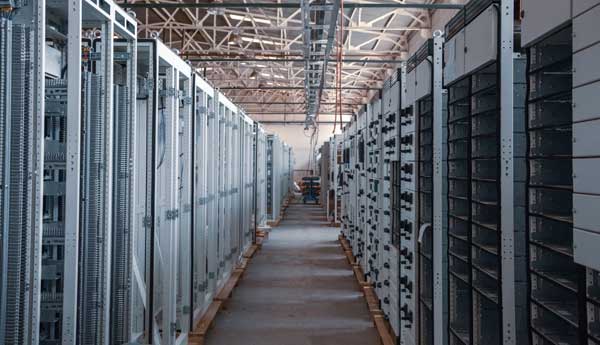Artificial Intelligence entails destructive environmental consequences

[This photo illustrates a data center. Photo Credit: Unsplash]
Bizarre AI-generated ASMR videos like glass fruits being sliced or typing on honey-drenched keyboards are going viral on TikTok.
Although these videos may seem harmless at first, they come at a cost: the environment.
AI systems, especially during training and inference stages, demand vast computing resources.
For instance, training OpenAI’s GTP-3 required about 1,300 megawatt hours of electricity.
This is as much power as 130 US homes consume annually.
This intensive process is especially demanding for AI models, consuming seven or eight times more energy than a typical computing workload.
Researchers at MIT have estimated that a ChatGPT prompt consumes about five times more electricity than a simple web search.
Data centres, which house IT infrastructure for data processing, management and storage, consume large amounts of energy to power their complex electronics.
While they currently account for about 1 to 1.6 percent of global electricity use, by 2030 to 2035, this figure is projected to reach 20% of global electricity consumption due to the rise of AI popularity.
Beyond their heavy electricity usage, AI models have other environmental consequences.
Short AI hardware life cycles contribute to the 53.6 million metric tons of global electronic waste produced in 2021, often ending up in landfills and releasing toxic chemicals.
This disposal of waste can lead to toxic pollution and further environmental degradation.
AI data centers also use massive amounts of water to keep systems cool, placing stress on local water supplies.
Meanwhile, the extraction of rare minerals like cobalt for AI hardware can cause lasting damage to local ecosystems.
The physical resources required by AI hardware can also deplete natural resources, which are often mined unsustainably and processed using toxic chemicals.
Cobalt used in batteries, for example, often comes from mining operations that can have devastating effects on local ecosystems.
AI also consumes enormous amounts of fossil-fuel-based electricity, which significantly contributes to greenhouse gas emissions.
Training a single large model can emit as much as 284 tons of CO2.
To address this, researchers and companies are exploring more sustainable solutions.
Optimizing models for energy efficiency, recycling hardware, and using specialized models instead of large general-purpose ones can help reduce resource consumption.
Transitioning AI data centers towards renewable energy sources is also crucial for reducing reliance on fossil fuels.
Google, for instance, has been carbon-neutral since 2007 and it aims to run its data centers on 100% renewable energy by 2030.
Microsoft has also been carbon-neutral since 2012, reducing 95% of their emissions in the industrial processes to date.
Governments can also develop regulations requiring AI companies to disclose their environmental impacts, promoting transparency.
Although AI continues to unlock exciting possibilities and drive technological breakthroughs, its hidden environmental costs cannot be ignored.
As demand for AI grows, the need to develop and use it responsibly also rises.
This responsibility must be shared through collaboration between tech companies, users, governments, and institutions to ensure transparency and accountability.
Only then can there be a future where AI benefits society without compromising the planet.

- Hanna Yein Cho / Grade 12
- Yongsan International School of Seoul

![THE HERALD STUDENT REPORTERS [US]](/assets/images/logo_student_us.png)
![THE HERALD STUDENT REPORTERS [Canada]](/assets/images/logo_student_ca.png)
